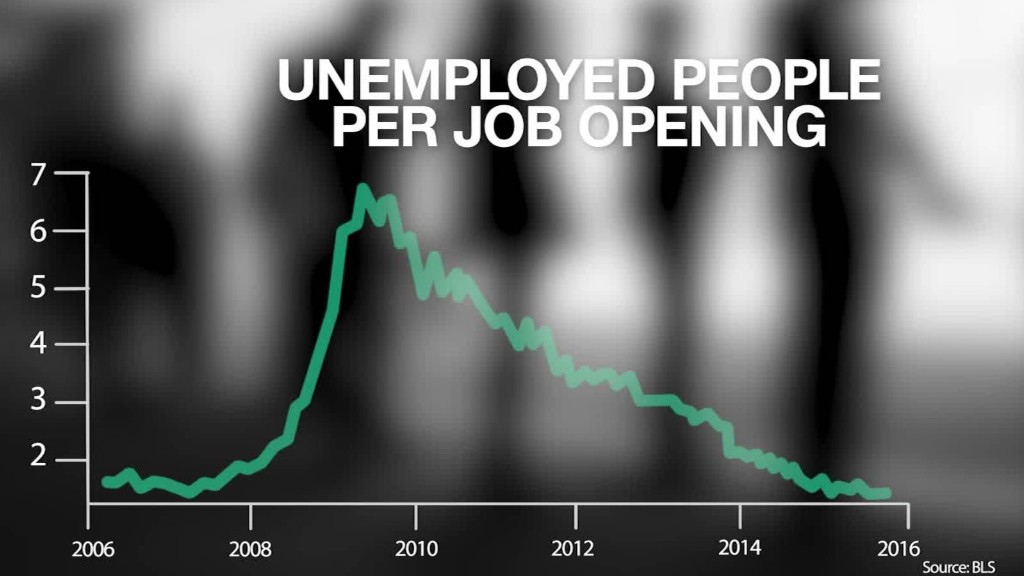
America's economy has a problem: Workers just aren't producing as much as they once did.
Some blame social media. Employees might feel like they're toiling away at the office, but if they are tweeting and Facebook messaging their friends, that's not doing much to boost the economy.
"What do we produce? We just go around and text each other," Carl Icahn, a prominent hedge fund manager and supporter of Donald Trump, told CNN.
Whatever the reason, Americans aren't working harder, and it's holding the U.S. economy back.
The annual growth in output per American worker (known as "worker productivity") is at its lowest level since the 1970s, according to government data.
Throughout the 1990s, worker productivity shot up by 2.2% a year, on average. In the early 2000s, it went up a brisk 2.6% a year. Since the Great Recession, it's been crawling along at barely more than 1% a year, on average.
Now it's getting worse. The latest reading came in at negative 0.5% for the period between April and June. (Yes, that means American workers were less productive this spring than a year ago).
Economists agree: The U.S. is in an alarming productivity slump, and it's not clear how to fix it.
The two most popular solutions are: Get businesses to invest in better equipment or revise the productivity statistics to take into account the benefits of the smartphone economy.
Related: Clinton far better for economy than Trump, say business economists
Businesses aren't investing
"The most important issue is a lack of investment spending," says David Kelly, chief global strategist at JPMorgan.
Companies are sitting on near record levels of cash. In a healthy economy, businesses typically spend money on new factories, tools and research. That's not happening. Businesses are either hording cash in their bank accounts or using it to buy back stock. Those activities do little to help the economy.
"You have to give each more worker tools" to be productive, says Kelly. Productivity boomed in the 1990s and early 2000s because businesses were investing in technology to improve factories and processes. The same worker could suddenly make a lot more gadgets or serve more people.
Today there are lots of reasons businesses are holding back on spending. Some blame the U.S. election. Sixty-two percent of business economists surveyed by the National Association for Business Economics this summer said "uncertainty about the national election" is holding back growth, mostly because companies are hesitant to invest for the future.
Related: I'm 35 and living with my mom again to get by
Blame regulations and the Federal Reserve?
Other experts point to regulations.
"Part of the reason is surely increased regulatory compliance cost," says economist Bill Watkins of California Lutheran University. "Increased regulatory burden translates to more hours [worked] with no positive impact on output."
Then there's the Federal Reserve. America's central bank has kept interest rates extremely low -- barely above 0% -- since the crisis in 2008. In theory, that should have made businesses want to borrow money and go spend it on new projects. But it may have backfired. Stocks and bonds have surged since the Fed cut rates to historic lows. Economists believe that companies preferred to put money in the markets than factories.
"Money has been diverted away from the types of investment spending which tends to enhance productivity," says Kelly of JPMorgan.
Related: How America's next president can double growth
The productivity data my be flawed
The final theory is that perhaps American workers are working harder, but the government statistics are flawed. It's easy to calculate how productive a worker in a factory is each hour. It's harder to judge output per worker per hour for someone who's job involves social media.
As investment firm AllianceBernstein noted in a recent research report, the vast majority of new jobs in America are in the service sector, not manufacturing. It's harder to measure service jobs.
Call it the iPhone dilemma. Apple's first one debuted in 2007, the same year U.S. productivity started to really fall.
"I can do things with my smartphone that my parents' generation couldn't have dreamed of," says Kelly. "But the advent of the smartphone has hardly shown up at all in terms of increased output."


